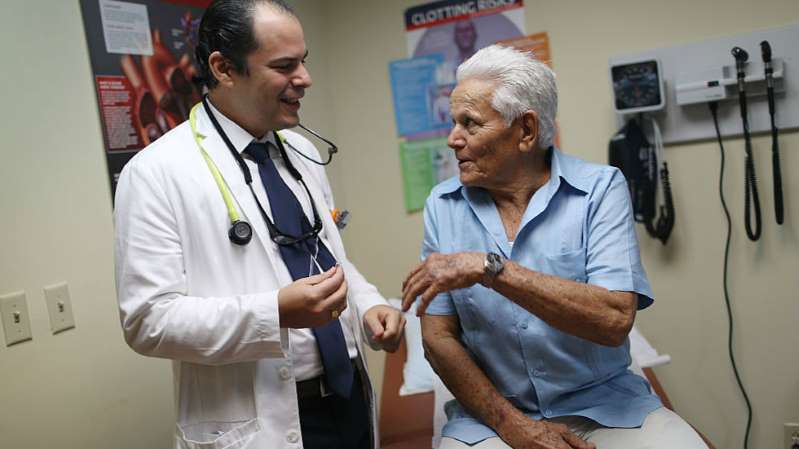By Peter Sullivan, The Hill–
A new study finds that a full-scale single-payer health insurance program, also called “Medicare for All,” would cost about $32 trillion over 10 years.
The study from the Urban Institute and the Commonwealth Fund found $32.01 trillion in new federal revenue would be needed to pay for the plan, highlighting the immense cost of a proposal at the center of the health care debate raging in the presidential race.
The study did not analyze the exact proposals from any presidential candidates, but the proposal it examined is roughly similar to the one put forward by Sen. Bernie Sanders (I-Vt.) and backed by Sen. Elizabeth Warren (D-Mass.).
The flip side is that the study finds the plan would provide large savings to American households, who would no longer have to pay premiums or deductibles for their care, resulting in $886 billion in savings for people over 10 years. The plan would also provide insurance to everyone, reducing the number of uninsured from 32.2 million people to zero, the study found.
The study looked at a range of proposed health care plans as Democratic presidential candidates clash over whether over whether to embrace full-scale single-payer. Other Democrats, like former Vice President Joe Biden and South Bend, Ind., Mayor Pete Buttigieg, instead back an alternative scaled-back plan that would make government-run insurance an option for everyone but not mandatory.
The study found that it is possible to provide near-universal coverage without a full-scale Medicare for All plan. For example, a plan that provides a government-run option plus generous government subsidies to help people buy insurance, along the lines of the Biden and Buttigieg plans, would cost $1.3 trillion over 10 years, much less than full-scale Medicare for All, the study found. The proposal would reduce the number of uninsured from 32.2 million to 6.6 million people. All of the remaining uninsured would be people in the country illegally.
That proposal would not eliminate premiums and deductibles, though.
The study did not look at which taxes would have to be raised to pay for the plans or who the new tax burden would fall on.
One of the central debates is whether middle-class people would end up saving money under Medicare for All. Proponents like Warren argue that the elimination of premiums and deductibles could balance out the higher taxes.
The study also examined a single-payer “lite” proposal, that would provide less benefits and require some out-of-pocket costs from enrollees, while also not covering people in the country illegally.
That scaled-back plan would cost $15.6 trillion over 10 years, about half of the full-scale plan, while providing insurance to everyone in the country legally.
The “lite” proposal would also reduce total U.S. spending on health care by about 6 percent, thanks to lower payments to doctors and hospitals, while the full-scale single-payer proposal would increase total U.S. health care spending by about 20 percent, due in large part to more people gaining coverage and using health care.


Leave A Comment
You must be logged in to post a comment.